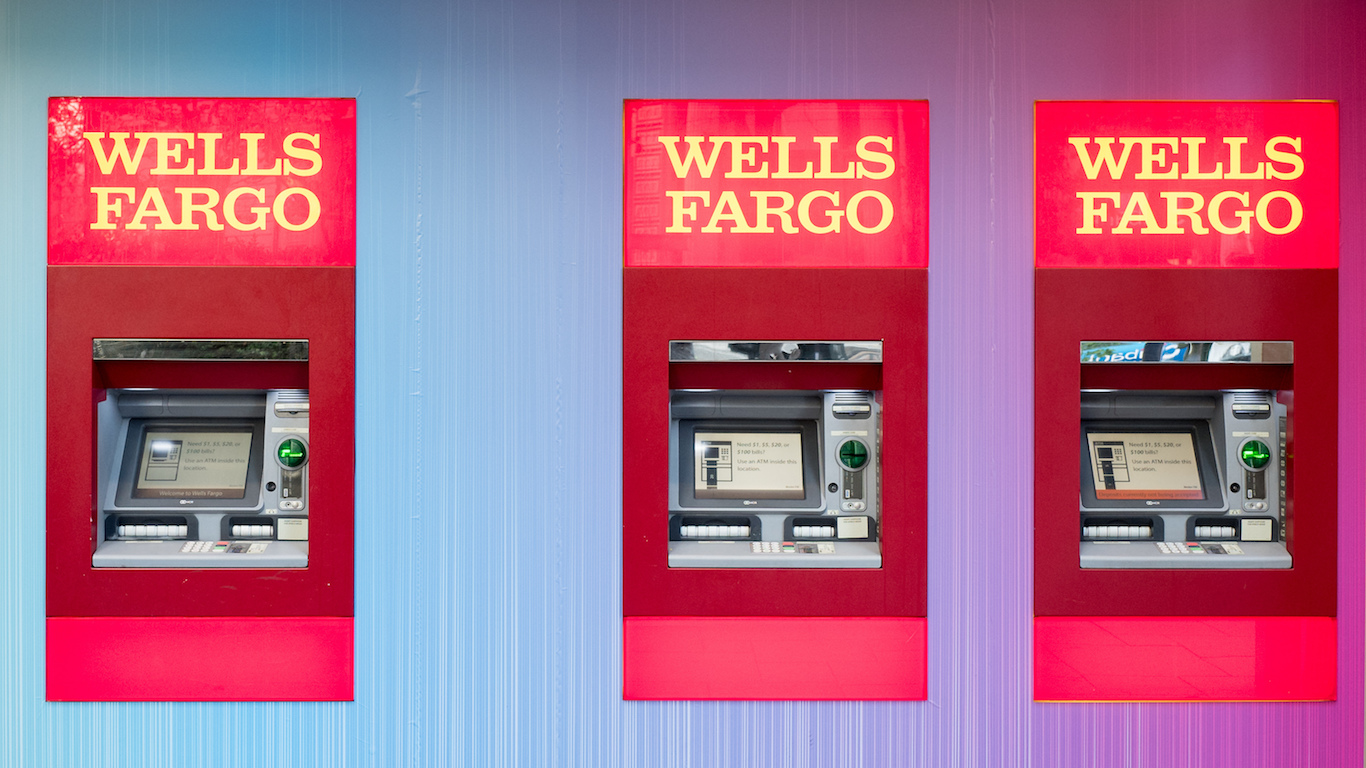Banking, finance, and taxes
Wells Fargo Solidifies Its Dividend Hike Despite Ongoing Woes

Published:
Last Updated:

If you followed the results of the Federal Reserve’s 2018 Stress Tests and Capital Planning (CCAR) announcement seen late in June there were some obvious winners and losers. Despite the ongoing account handling woes and newer questionable practices which have come to light over the last 18 months or so, Wells Fargo & Co. (NYSE: WFC) was given permission to increase its capital return program more than some investors might have expected.
While the news of a dividend hike was known, an announcement was made on Tuesday that Wells Fargo was raising its quarterly common stock dividend to $0.43 per share. The dividend will be payable September 1, 2018, to holders of record on August 10, 2018. This represents a 10% hike from the prior $0.39 per share quarterly payout.
With approximately 4.8 billion shares outstanding, Wells Fargo’s new annualized dividend liability will be roughly $8.25 billion. That is against a $282 billion market cap and it represents a common stock dividend yield of 2.95% based upon current share prices.
Wells Fargo’s approved 2018 Capital Plan covers the four-quarter period from the third quarter of 2018 through the second quarter of 2019. It was also known that the capital plan includes up to $24.5 billion of common stock repurchases for the same calendar period. Wells Fargo had previously said that it repurchased $11.4 billion of common stock for the previous four quarters ended second quarter 2018.
The June 28 press release after the CCAR from Wells Fargo’s “No Objection to Its 2018 Capital Plan” said:
As part of the plan, the Company expects that it will, subject to approval by the Company’s Board of Directors, increase its third quarter 2018 common stock dividend to $0.43 per share from $0.39 per share. The plan also includes higher levels of common stock repurchases – up to $24.5 billion for the four-quarter period (third quarter 2018 through second quarter 2019), compared with Wells Fargo’s 2017 Capital Plan, which covers the third quarter of 2017 through the second quarter of 2018 and includes up to $11.5 billion of common stock repurchases1, of which $8.5 billion of common stock has been repurchased through the first quarter of 2018. In addition, the Company may consider redemptions or repurchases of other capital securities as part of the plan.
Wells Fargo had also telegraphed some of the news when it reported net income of $5.2 billion in the second quarter. Chief Financial Officer John Shrewsberry addressed earnings, costs, and Wells Fargo’s path of dividends and buybacks in that more recent release. He said in that release:
Wells Fargo reported $5.2 billion of net income in the second quarter, which included net discrete income tax expense of $481 million. Net interest income grew both linked quarter and year-over-year in the second quarter, credit performance and capital levels remained strong, and we are on track to meet our expense reduction expectations. In addition, we received a non-objection to our 2018 Capital Plan, which includes an increase in our quarterly common stock dividend rate in third quarter 2018 to $0.43 per share, subject to board approval, as well as up to $24.5 billion of gross common stock repurchases during the four-quarter period beginning in third quarter 2018. The shareholder returns included in the capital plan are approximately 70% higher than our previous four quarter capital actions, demonstrating our commitment to returning more capital to shareholders. Our ability to return this level of capital is a result of capital built in recent years through continued stable earnings and a lower level of risk-weighted assets.
It seems fairly amazing that the Federal Reserve has allowed this much capital to be returned to its shareholders. After all, this current capital return plan is more than its annual run rate of income based on last quarter’s numbers being carried forward for four straight quarters. One takeaway which seems pretty obvious is that Wells Fargo’s news headlines seemed far more punishing than the actual financial impact from the bank’s operating woes. That even seems true after regulators effectively prevented Wells Fargo from growing its asset base for the time being.
Wells Fargo’s shares were last seen trading up 0.5% at $58.30 on Tuesday. That is versus a 52-week trading range of $49.27 to $66.31 and versus the Thomson Reuters consensus analyst target price of $61.83.
Start by taking a quick retirement quiz from SmartAsset that will match you with up to 3 financial advisors that serve your area and beyond in 5 minutes, or less.
Each advisor has been vetted by SmartAsset and is held to a fiduciary standard to act in your best interests.
Here’s how it works:
1. Answer SmartAsset advisor match quiz
2. Review your pre-screened matches at your leisure. Check out the advisors’ profiles.
3. Speak with advisors at no cost to you. Have an introductory call on the phone or introduction in person and choose whom to work with in the future
Thank you for reading! Have some feedback for us?
Contact the 24/7 Wall St. editorial team.